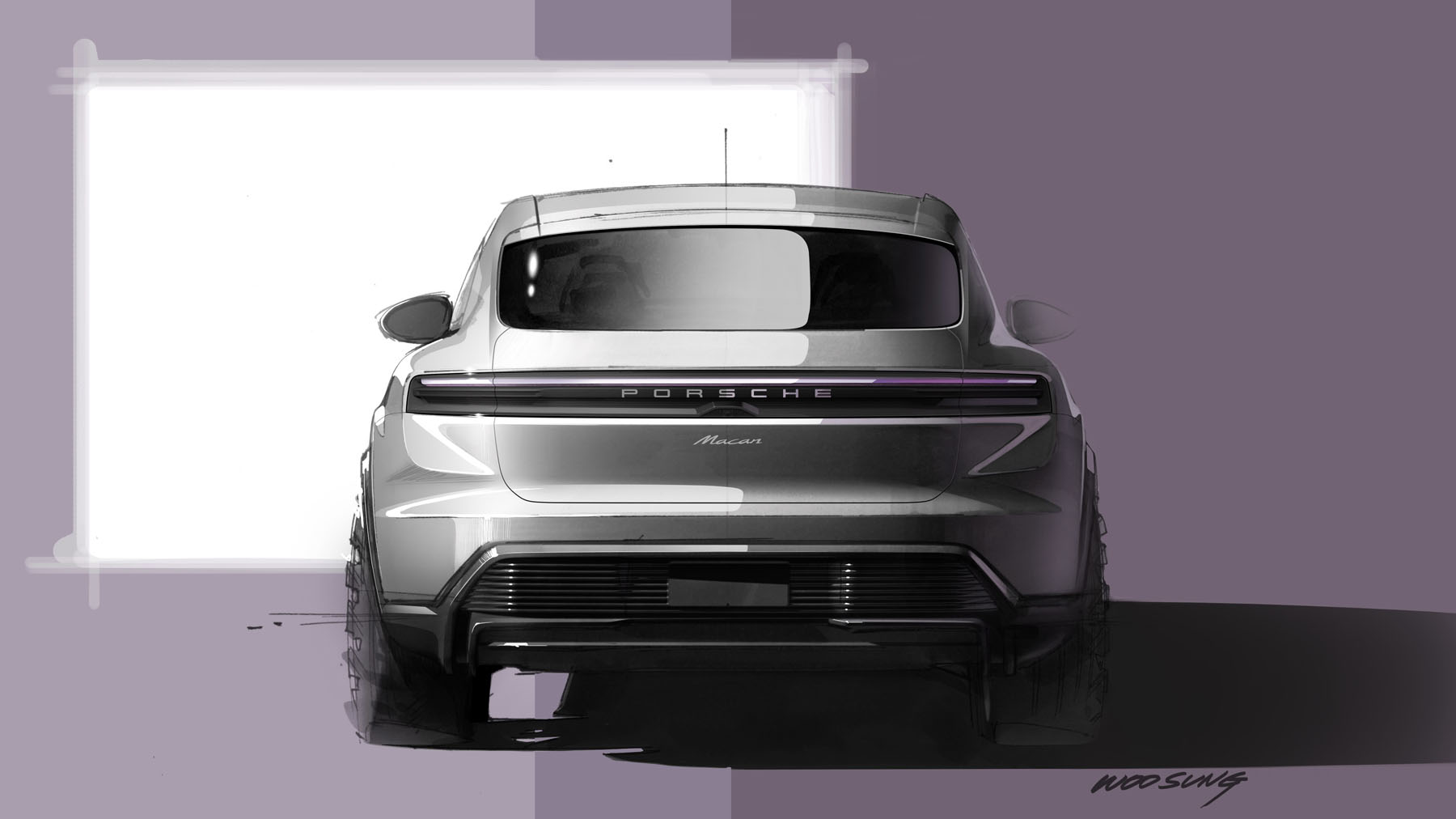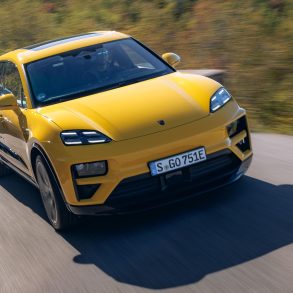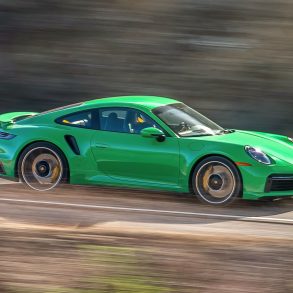Innovation with Porsche roots
Within a few days, the world will see what Porsche’s future vision is for the second generation of the Macan EV. The new Macan is the first model Porsche is electrifying from an existing, established product identity. Paramount to the current management at Porsche is that every new sports car has to be very clearly recognizable as part of the Porsche product family but also visually new. Striking the right balance between Porsche’s roots and its future designs is a challenging endeavor.
Michael Mauer interviewed
Instrumental to its design is Vice President of Style Porsche, Michael Mauer, who recently interviewed on the forthcoming Macan EV.
In your role, how do you approach the task of designing the first all-electric Macan?
“Before we think about specific details, the strategic approach plays a crucial part. For example: What distinguishes the model? What did its predecessors look like? This was a particularly exciting challenge with the new Macan. We presented the first generation in 2013 and have consistently, but very mindfully, updated it. In broad terms, this has given the Macan a well-established product identity across global markets. With each new generation, our mission is to strike the right balance between familiar design characteristics and new elements. Specifically, we must make each new sports car clearly, recognizably part of the Porsche product family and its respective model line. Yet it also has to be perceived as ‘the new one’. This visual consistency is extremely important for our brand. The new Macan is also the first model that we are making fully electric, but which already has an existing, established product identity. So this raises the question: How ‘new’ does the ‘new one’ have to be – what’s too much, what’s just right?”
How do you find that balance? What are the parameters that determine whether the model will be well received by customers?
“That’s difficult to answer in general terms – the design process happens years before the market launch of a car. There are no strictly objective parameters by which we can evaluate the attractiveness of future models. With Porsche design principles, on a brand level we have developed a set of guidelines that help us keep our designs in line with our strategic objectives in the course of our daily work. For Porsche, we have defined three key concepts that describe the character of the brand: Focus, Tension and Purpose. In essence, you could say that these key terms describe what distinguishes a Porsche product – what makes it a ‘quintessentially Porsche’ experience for customers.”
How did these concepts emerge? How are they applied in practical terms?
Mauer: To put it plainly, I would say that the emergence of these concepts – or more precisely their definition – was almost more important than the terms themselves. The task of precisely articulating these three concepts is much more complex than it sounds. The same applies here: Without teamwork, it’s out of the question. The discussion and the interrogation of the Porsche brand attributes was – and remains – a highly valuable activity for the entire design team. Its specific benefits are multiple: for one thing, we use these terms as a kind of compass to make sure that we don’t lose sight of the brand’s essence as we peer into the future. We also use them as a decision-making aid when we are thinking about what approaches to pursue in an early concept phase.
Could you give a specific example of the implementation of a key concept?
“The concept of ‘Focus’ is a good example: in terms of the interior, ‘Focus’ means that in a Porsche sports car, the driver is always very much the focus. Specifically, all components that are important for the driver are arranged around them for direct access. And with the curved display, we’ve even taken things a step further. With the floating display in a slightly curved form – ideal for the driver – we have designed this key element in an even more driver-focused way. We have also created a sort of ‘minimalist mode’ in the instrument cluster. This enables the driver, if they so desire, to select only the elements of the instrument panel that are crucial for driving. Focusing only on the things that are absolutely necessary, as it were.”

How important are different international tastes and trends in the design process?
“In general, I think that here, too, striking the right balance is essential for an established brand like Porsche. A brand with a powerful identity also banks on the fact that it doesn’t slavishly follow every trend. Sometimes it’s a better strategy not to be the first-mover on every topic. The idea is to scrutinize trends and influences carefully and to examine critically whether they fit with the brand. This is the only way for us to preserve our unique identity over the long term. That’s equally true for the different markets. One example: in Asia, digital elements in the car play a very important role – the design is more playful overall compared with a European perspective. What does that mean for Porsche? The result is that we take a very close look at these requirements. At the same time, I strongly believe that the reason Porsche is so beloved around the world is the clear brand DNA and long tradition and, as I put it, a ‘consistent CV’.”
Does that mean the brand runs the risk, perhaps, of at some point being perceived as old-fashioned and no longer up to date?
“Unquestionably! Striking the right balance between ‘quintessentially Porsche’ and ‘innovative’ is a tricky proposition at times. It’s a challenge we face on a structural level as well. The design of a vehicle is never entirely the work of a single designer. The design process is a team endeavor and is highly dependent on an exchange of different ideas. At Porsche, we have deliberately developed the creative space to think about future approaches and variations of individual design elements in a way that is very separate from the work on specific models. This ensures that creative ideas can take shape independently from the design process for specific series-production models, although these ideas do then frequently find their way into production cars. Another important aspect of what we do relates to the composition of the team. We combine very experienced designers with the young ‘up- and-comers’ – and this dynamic usually produces really exciting ideas. Overall, we have around 200 design staff.”
Specifically in reference to the new, all-electric Macan: how important is the visualization of the electric powertrain in the design?
“In general, Porsche has decided not to distinguish its electric models completely from its combustion-engine sports cars. Porsche remains Porsche – and even an electric Porsche is a sports car in its segment. From this standpoint, it’s only logical that we’re not abandoning our proven Porsche design DNA. Without giving too much away, the new Macan is very clearly a Porsche – and a Macan – at first glance. I would say that we have fundamentally preserved the proportions that, for Porsche, typify a sports car in the segment. The design has been sharpened both inside and out – the new model has an even sportier and more dynamic vibe. And driving pleasure is definitely reflected in the design.”
All content © 2024 Dr. Ing. h.c. F. Porsche AG













